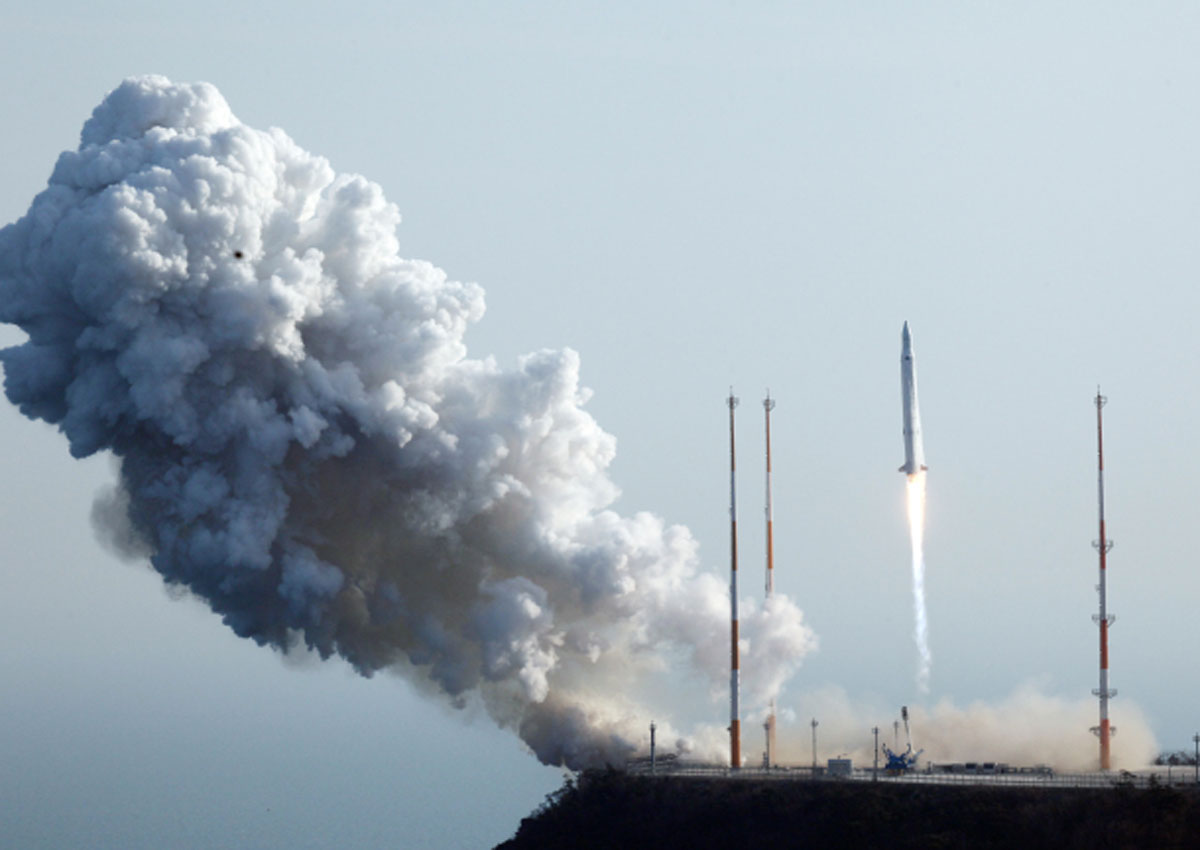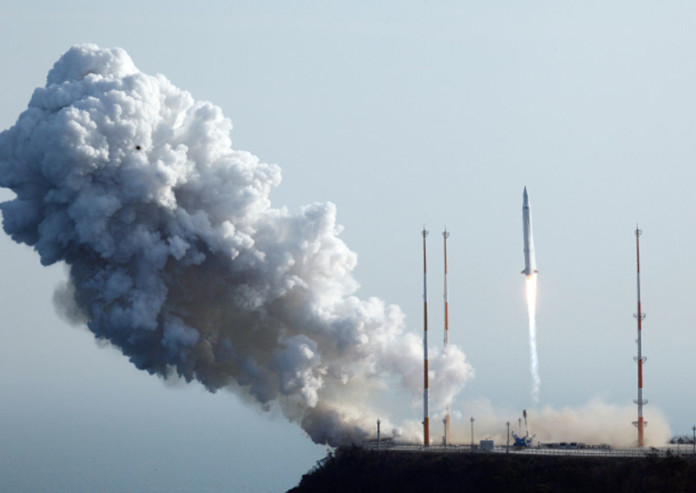SEOUL/DAEJEON – Despite several early failures, Korean engineers and scientists are poised to leap into space, hoping to realise the country’s long-cherished goal of reaching the moon.
Following a late start, Asia’s fourth-largest economy went through many challenges to develop its own launch vehicle, which is key to the nation’s space project.
The efforts have paid off as Korea is now on the threshold of a new era in space technology, with its first lunar exploration planned for 2020. It is a massive project that could propel the country’s ambitions to go deeper into space.
Korea joined the global space club with the successful launch of a satellite into orbit in 2013. It plans to send to the moon a lander that can carry an artificial-intelligence rover programmed to explore rare minerals on its surface. A robotic orbiter designed to circle the moon will be sent on a foreign rocket in advance. This is scheduled for 2018.
The robotic orbiter will find a feasible spot for a lunar landing and also transmit data collected by the lander afterwards, engineers say.
“Reaching the moon itself is a symbolic mission for Korea,” said Choi Gi-hyuk, head of the lunar exploration research division at the Korea Aerospace Research Institute.
“It signifies Korea crossing the threshold of space technology exclusively developed by advanced countries,” he said at his office in Daejeon.
Besides the area of technological advancements, the mission will also have an impact on national pride and geopolitical security.
In recent years, space films have been big hits at Korean theatres, promoting some critics to suggest that this reflects locals’ desire for extraterrestrial exploration and a natural curiosity toward space.
Flying 38,000 kilometers above the earth to the moon, requires great technical accuracy, Choi said, comparing the journey to throwing a ball from Seoul to hit a target in Busan.
Due to the possibility of using space technology for military purposes, such technical knowledge is not usually transferred from advanced countries due to defence reasons.
This is why Korea had to start from scratch.
Korea’s space programme officially began in 1989, nearly 40 years later than advanced countries such as US and Russia.
There are various reasons behind this delayed development.
Some critics say that the US may have put pressure on Korea not to develop space technology. However, Cho Gwang-rae, head of KARI, Korea’s NASA, said that the space projects were prioritized lower than the development of automobiles, shipping and petrochemical industries, which were pushed by the government as vehicles for economic growth.
“Korea has achieved this advancement in space technology in a short period of time. But we still have a long way to go,” he said.
Developing a rocket engine capable of travelling beyond the earth’s orbital sphere is the key, he said. In January, his team succeeded in solving problems with the combustion instability of a 75-ton engine — a hurdle that they have strived to overcome for years.
The launch vehicle, named the KSLV-II, is a three-stage rocket. It will be able to go up to 800 kilometers with four 75-ton liquid engines in the first projectile. The second will have one 75-ton engine and the third will have a single 7-ton engine.
If Korea succeeds with its lunar project in 2020, the country plans to send an orbiter to Mars in 2027.
As for when the country will see a Korean astronaut on the moon, Cho said, “For now, we have to secure technology capable of building a launch vehicle to the space. Then we can talk about Mars and exploration to deeper space.” He added that sending a human to space is a whole different concept for any space rocket developer.
“We may have to co-operate with the league of advanced nations for that in the future. But first, we must get a foot in the door.”
By Cho Chung-un (christory@heraldcorp.com)






